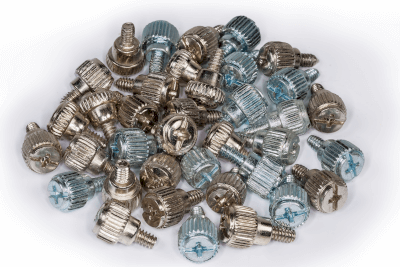What Is a Thumb Screw?

A thumb screw is a screw that is intended to be tightened or loosened by hand without using tools such as screwdrivers. Because thumb screws are tightened by hand, the head part is characterized by its large size and finger-friendly shape.
A thumb screw is ideal for locations where they are repeatedly taken on and off. Since they are tightened by hand each time, the screw-tightening force is not consistent. It is necessary to consider the type of person who will be installing and removing the screws, and whether there will be any impact if the screw is not tightened properly.
Uses of Thumb Screws
Thumb screws come in both male and female types. As mentioned above, they are used in various fields, including office equipment, household goods, furniture, industrial equipment, assembly, and processing jigs, due to their ease of use. At home, they are used as lids for replacing batteries in electrical appliances, for fixing cameras on tripods, and for smartphone stands. In industrial equipment, they are used to secure covers, guides, and other items that users remove when conveyance is jammed. They are also used for fixing parts in jigs at processing and assembly sites.
Principle of Thumb Screws
When a product is equipped with thumb screws, the user intuitively understands that it is a part that can be removed. It is characterized by the fact that it can be easily attached and detached and also has the effect of pointing to the part. Conversely, thumb screws are not used for a part that is not to be removed (or a part that should not be removed) because it is easy to assemble.
In most thumb screws, the threaded part is made of metal. The knob part can be made of either resin or metal, but in the case of resin, injection molding allows for a wider range of designs. Many of them are designed to be easier to grip. There are also simply circular thumb screws regardless of whether they are made of metal or resin. In such cases, they always have knurling around the periphery. This is to make it easier for fingers to catch on the knob.
When designing thumb screws, it is important to note the following: the thumb screws must be strong enough to handle the weight and vibration of the part, there must be enough space to turn it by hand, and there must be no problem if the thumb screws happen to fail.